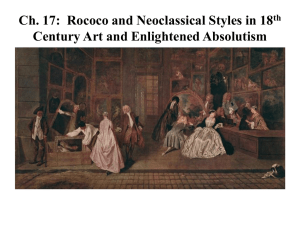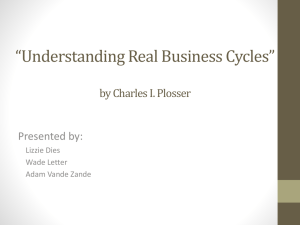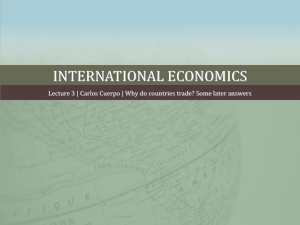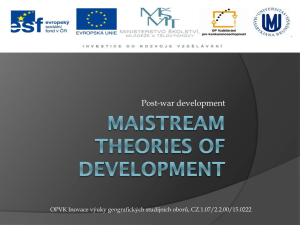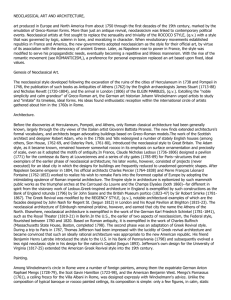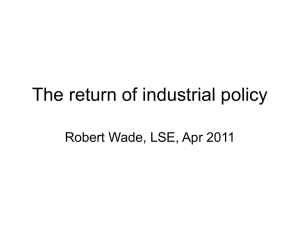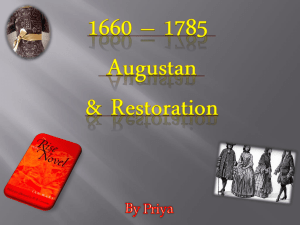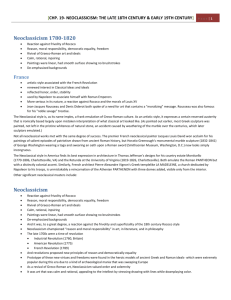- Our Schools
advertisement
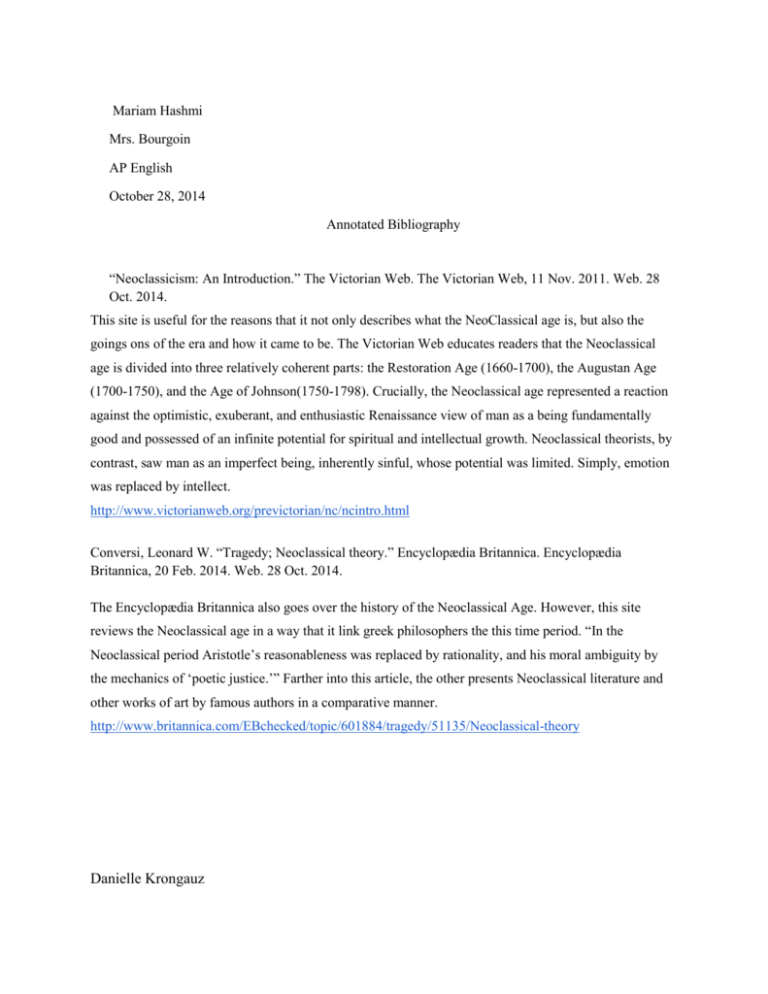
Mariam Hashmi Mrs. Bourgoin AP English October 28, 2014 Annotated Bibliography “Neoclassicism: An Introduction.” The Victorian Web. The Victorian Web, 11 Nov. 2011. Web. 28 Oct. 2014. This site is useful for the reasons that it not only describes what the NeoClassical age is, but also the goings ons of the era and how it came to be. The Victorian Web educates readers that the Neoclassical age is divided into three relatively coherent parts: the Restoration Age (1660-1700), the Augustan Age (1700-1750), and the Age of Johnson(1750-1798). Crucially, the Neoclassical age represented a reaction against the optimistic, exuberant, and enthusiastic Renaissance view of man as a being fundamentally good and possessed of an infinite potential for spiritual and intellectual growth. Neoclassical theorists, by contrast, saw man as an imperfect being, inherently sinful, whose potential was limited. Simply, emotion was replaced by intellect. http://www.victorianweb.org/previctorian/nc/ncintro.html Conversi, Leonard W. “Tragedy; Neoclassical theory.” Encyclopædia Britannica. Encyclopædia Britannica, 20 Feb. 2014. Web. 28 Oct. 2014. The Encyclopædia Britannica also goes over the history of the Neoclassical Age. However, this site reviews the Neoclassical age in a way that it link greek philosophers the this time period. “In the Neoclassical period Aristotle’s reasonableness was replaced by rationality, and his moral ambiguity by the mechanics of ‘poetic justice.’” Farther into this article, the other presents Neoclassical literature and other works of art by famous authors in a comparative manner. http://www.britannica.com/EBchecked/topic/601884/tragedy/51135/Neoclassical-theory Danielle Krongauz Mrs. Bourgoin Ap Literature and Composition November 2 2014 Annotated Bibliography "Introduction to Neoclassisism." Introduction to Neoclassisism. Brooklyn College, 17 Aug. 2000. Web. 02 Nov. 2014. <http://academic.brooklyn.cuny.edu/english/melani/cs6/neocl.html>. This site is useful (and reliable because it is a website for an academic institution) because it give a concise overview of the hallmarks of the Neoclassical Era, a total of five possible tenets. It explains how the Neoclassical Era was based off of Classical (Greek and Roman) ideals and called for the focus of humankind as a whole, not as individuals. It therefore focused on human characteristics as a whole rather than individually. The Neoclassical era professed that human nature is imperfect, and that caused all aspirations to be limited. This was done under the idea that because we are imperfect, our aims should be sensible because anything grander would not succeed due to the limitations of humans. The Neoclassial age treasured reason over emotion. There was constant pressure and belief that humans should bend and conform to social norms. "Introductory Lecture on the Neoclassical Period in English Literature."Introductory Lecture on the Neoclassical Period in English Literature. Winthrop University, n.d. Web. 02 Nov. 2014. <http://faculty.winthrop.edu/kosterj/engl201/neoclassical.htm>. This source is important, and like the previous an academic website, because not only does it give other tenets and hallmarks of the Neoclassical Era, but it also mentions the historical context that brought about the change in thought. It focuses on the Neoclassical age of Britain. It wa the age of complacency and luxury. The British felt invincible in politics, which led to an assumption of their moral and intellectual supremacy. During the Neoclassical Age, there was a rise of the middle class, who sought to prove they had ‘good taste’. Men went in herds to coffee houses in the City of London to discuss the latest periodicals, while women organized elaborate rituals for drinking that expensive, bitter new imported beverages. It was also the age of wit, where quick and sharp commentary was valued in literary works. Although it was the Age of Reason, this pursuit of knowledge was used to explain Divine occurrences in the Bible, an aspect that leaked into the literature of the day. It wa the pursuit of rational explanation for occurrences that seemed mystical or unexplainable. Sarah Wokurka AP Enlgish Period 0-1 2 November 2014 Annotated Bibliography Buchel, Brad. "Art Education - Art Movement - Neoclassicism." Art Education - Art Movement Neoclassicism. N.p., n.d. Web. 02 Nov. 2014. I found this source to be vital in defining the neoclassical era because it tells the ways that the neoclassical era started. Such as the fact that neoclassicism was created to replace the baroque era, and because of the inspiration of the discovery of ancient artifacts at the ruins of Herculaneum and Pompeii. The article also tells how important the “movement” was in locations such as France, and how even Napoleon himself encouraged the neoclassic because of their patriotic messages and solid figures. These are important aspects to take into consideration when studying the neoclassical era, because it demonstrates the power of the neoclassic era and how quickly it came to be. http://www.arteducation.com.au/art-movements/neoclassicism.php "Neo-Classicism Artists." Neo-Classicism. Art in the Picture, n.d. Web. 02 Nov. 2014. This source is important because it educates on just how “classic” the neoclassic artists were. It tells readers that the art was never just created from the start, it still adds some sort of the same traditional aspects in each piece. The era implies confidence in said traditions, along with being highly self aware. The source also includes that the neoclassical era was so traditionally based due to the desire to once again be pure after the baroque and Rocco styles. Te article continues on to telling the impact of the era had on its popular locations, such as France, until it's demise in the mid 19th century. http://www.artinthepicture.com/styles/Neo-Classicism/
